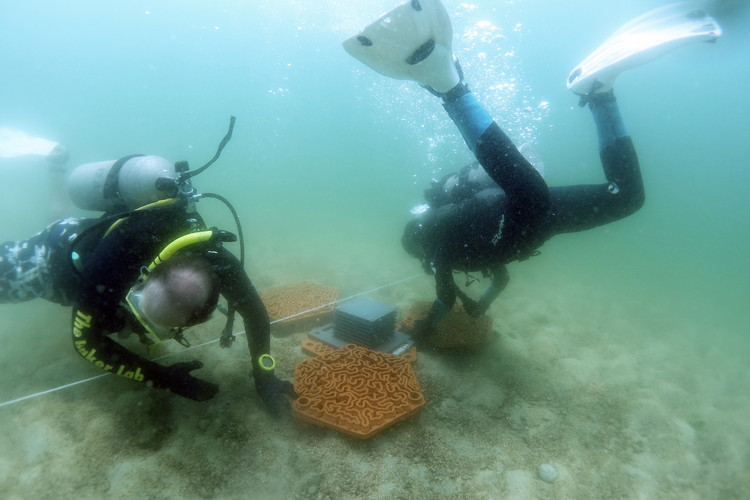Coral reefs are one of the most diverse ecosystems on the planet, providing a home to more than 25% of all marine species. Unfortunately, these beautiful and important habitats are at risk of extinction due to climate change, pollution, and overfishing. However, there is a glimmer of hope in the development of modern techniques to restore these reefs. One such innovator is Dr. Andrew Ziegler, a marine biologist-turned-entrepreneur who uses 3D printing and clay to restore coral reefs.
Who is Dr. Andrew Ziegler?
Dr. Andrew Ziegler is a marine biologist with a passion for coral reef restoration. He holds a BS and Ph.D. in Marine Science from the University of Maine. in Marine Biology from the University of California, Santa Cruz. After completing his PhD, Dr. Ziegler worked as a postdoctoral researcher at the Hawaii Institute of Marine Biology and later as an assistant professor at the University of Puerto Rico.
In 2015, Dr. Ziegler founded CoralVita, a company that uses advanced techniques to restore coral reefs. The company has received numerous awards and recognition for its work, including being named a finalist in the 2020 Ocean Awards for Innovation.
Meet the Innovator Restoring Coral Reefs with 3D Printing and Clay
Coral reefs are one of the most biodiverse ecosystems on the planet, home to thousands of species of fish, plants, and animals. However, coral reefs are under threat due to climate change, pollution, and overfishing. According to the National Oceanic and Atmospheric Administration, more than 30% of the world’s coral reefs have been destroyed and another 60% are threatened within the next 30 years.

Source: CNN
Fortunately, there are innovators working to restore coral reefs using cutting-edge technology. One such innovator is Alex Goode, founder of Reef Design Lab, an Australian company that uses 3D printing and clay to create artificial coral reefs.
Goode’s journey to becoming a coral reef innovator began in 2014 when he was a student at the Royal Melbourne Institute of Technology. He learns that coral reefs are in danger and decides to do something about it. After extensive research, he came up with the idea of 3D printing and using clay to create artificial rocks.
Goode’s method involves creating a 3D model of the coral’s structure, which is then printed using a specially designed printer that can print from clay. The clay structure is then fired to make it hard and durable and finally placed in the ocean where it can begin to attract marine life.
Good’s artificial reefs have many advantages over traditional coral restoration methods. For one thing, they can be created much more quickly than natural coral reefs, which can take decades or centuries to form. Additionally, Good Reefers are designed to be modular, meaning they can be easily customized and adjusted to the needs of different marine environments.
But perhaps the most important advantage of Good’s reefers is that they are made from natural materials, which means they are sustainable and do not harm the environment. Unlike other artificial rocks that are made of materials such as concrete, Goode’s rocks are made of clay, a natural, non-toxic material.
Goode’s work has been recognized internationally and his artificial reefs have been installed in locations around the world including the Maldives, Thailand, and the United Arab Emirates. His work has also been featured in numerous media outlets including National Geographic, BBC, and The Guardian.
In addition to his work with the Reef Design Lab, Goode is also an advocate for marine conservation and sustainable design. He believes his work with artificial reefs can help raise awareness of the importance of preserving coral reefs and other marine ecosystems.
How do 3D printing and clay help in restoring coral reefs?
Coral reefs are made up of millions of tiny organisms called polyps. These polyps secrete calcium carbonate, which forms the hard structure of the reef. However, when corals are stressed by factors such as increased water temperatures, pollution, or overfishing, the polyps may die, leaving only calcium carbonate structures. This is where 3D printing and clay come in.
Coral Vita uses a technique called “micro-fragmentation” that involves breaking up healthy coral colonies into small pieces and then using 3D printing to create a structure that mimics the natural shape of coral reefs. does. The company then places these 3D-printed structures in a marine nursery, where they are covered in a special type of soil that encourages the growth of new coral polyps.
After the polyps grow, the 3D-printed structures are transplanted into damaged coral reefs, where they help restore reef structure and biodiversity. This technique is faster and more efficient than traditional coral restoration methods, which usually involve transplanting individual coral colonies at a time.
The Benefits of Using 3D Printing and Clay for Coral Restoration
The use of 3D printing and clay for coral restoration has several benefits, including:
Faster Restoration:
Micro-fragmentation, 3D printing, and soil application allow the rapid creation of many new coral colonies. This method is much faster than traditional rehabilitation methods, which can take years to show significant progress.

Source: CNN
Improved Survival Rates:
Using 3D printing and clay helps improve the survival rate of newly transplanted coral colonies. The soil provides a substrate for the polyps, and the 3D-printed structure mimics the natural shape of coral reefs, helping to stimulate new polyp growth.
Cost-Effective:
3D printing and soil application are cost-effective methods of coral restoration. Traditional methods of coral restoration require significant financial resources and time, making it difficult to restore large areas of coral reefs. With 3D printing and clay, it is possible to restore large areas of damaged coral reefs at a low cost.
Scalability:
The use of 3D printing and clay is scalable, meaning it can be used to restore coral reefs on a large scale. CoralVita has already expanded its operations to the Bahamas and plans to expand to other regions.
Final Words
Finally, a marine biologist-turned-businessman using 3D printing and clay to restore coral reefs is a true innovator. With the help of technology and a deep understanding of marine ecosystems, this man is making a significant impact in the field of marine conservation. Its use of 3D printing and clay is a prime example of how technology can be used to tackle environmental challenges and promote sustainability. By sharing his story and methods, we hope to inspire others to join efforts to protect our planet’s oceans and the vital ecosystems that support them. With continued innovation and collaboration, we can work toward a more sustainable future for ourselves and the planet.

